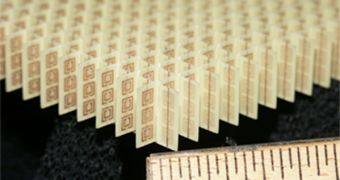Over the past few years, materials scientists have developed a series of new inventions, metamaterials that have exquisite physical and chemical properties. But because they are extremely advanced, they are still incredibly difficult to produce.
A team of investigators from the Interuniversity Microelectronics Center in Belgiu, led by expert Kristof Lodewijks, believes it may have just discovered a method of producing metamaterials faster and cheaper than ever before.
Metamaterials are very important because they can be used to create a host of interesting devices, such as for example invisibility cloaks, new and advanced electronics, artificial black holes and multiverses.
These things can also redirect light, bending its path so that they can conceal objects with relative ease. This property and many others are making it easier for experts to develop more and more applications for these materials.
However, production capabilities are beginning to fall behind the pace of discovery. In other words, this field of research has reached a point where the only progress can be achieved if metamaterials start being produced at higher speeds and for lower costs.
Lodewijks says that his team may have the solution. “We show that we can circumvent this limitation,” he argues. The technique is extremely simple, and yet innovative, other scientists say.
The group essentially developed a new way for creating metamaterial templates. They do so by depositing nanoscale polystyrene balls on a gold surface, where the beads self-assemble into geometrical structures.
These formations can be used as a template for producing metamaterials at lower prices than ever before. The new arrays have very small numbers of defects.
The new technology is also scalable, which means that experts applying it at larger scales would get the same results. This innovation could finally make metamaterials readily available for further studies.
These materials were earlier this year used to produce a new science tool containing 60 concentric rings of the stuff within. Their combined action contributed to manipulating microwaves in a manner that ensures the radiation remain forever contained in an artificial black hole.
Further details of the work appeared in the June 3 issue of the esteemed New Journal of Physics, a publication of the Institute of Physics (IoP) and German Physical Society, Technology Review reports.

 14 DAY TRIAL //
14 DAY TRIAL //